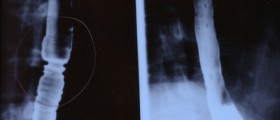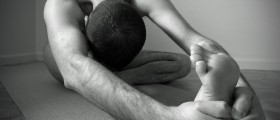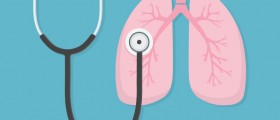Muscle spasm in the arms is an involuntary action of arm muscles, and it is usually located in the shoulder or in the arm. Patients who had experienced muscle spasms in the arm claim that the condition has caused them much pain. The symptoms and duration of the muscle spasms may actually be very different. They can last from a minute or two or cause problems for days for the affected person.
Untreated muscle spasms can become a constant condition. Sudden contraction of muscles in the arm is usually followed by very rigid tightness of affected muscles, painful sensation, and swelling.
What Causes Muscle Spasms in Arms
Strenuous physical activity, dehydration, injuries of the muscles, and improper functioning of the motor neurons are the most likely causes of spasms in the arm muscles. Exercising is one of the most common causes of muscle spasms, and every part of the body that you worked on in the gym can experience spasm activity, including the arm muscles. This is especially true if you are not the type of person spending your free time in the gym, and muscle spasms are the signal your body is not used to such hard work.

Lack of fluids in the body can also provoke muscle spasms because many minerals the body needs can easily be sweated out. Dehydration is not necessarily connected to exercising, and people can also experience some unpleasant muscle spasms just walking or being in the sun and sweating excessively.
Muscle injuries caused by some trauma, but also a sedentary way of life are linked to arm spasms as well. Twisting an arm during some sports competition or match can also provoke arm muscle spasms. Also, if you experience some problems with the oxygen supply or myotonia, there are chances that your muscles in the arms could experience some spasms.
Problems with the functioning of the motor neurons are considered to be one of the main causes of muscle spasms. Serious medical problems, such as nerve damage or cerebral palsy are also known to be causes of spasms in the arm muscles.
How Can You Prevent and Treat This Condition
Preventive measures include a healthy lifestyle and exercising with a trainer in the gym. A healthy diet and drinking plenty of water are necessary to prevent spasms in the arm muscles. Learn to breathe deeply, while exercising and performing your everyday activities, to avoid lack of oxygen which can also lead to muscle spasms.This condition should not be left without treatment because there is a possibility to become permanent. Consult your doctor, determine the cause of the problem, and then start the treatment. In most cases, painkiller medications, acupuncture, acupressure, and herbs such as valerian or chamomile are found to be very helpful.
Very rarely, a patient suffering from arms muscle spasm needs a surgical procedure to resolve the problem.
- Idiopathic Arm Pain and nonspecific Work-Related Upper Limb Disorders (WRULDs) appears to be one subject but described from two different points of view as an idiopathic illness or an occupational disorder.
- Nonspecific arm pain correlates with heightening illness concern and may represent a somatic presentation of psychological distress (a somatoform disorder). Vranceanu and colleagues found a notable relationship between heightened illness concern and arm-specific disability measured by DASH score in patients with nonspecific pain without discrete pathophysiological processes.
- The effective coping mechanism of self-efficacy (the sense that one can accomplish one’s goals in spite of symptoms or physical impairment) also correlates strongly with decreased symptoms and disability. Self-efficacy can be learned and practiced. There is strong evidence that cognitive behavioral therapy (coaching and training in accurate interpretation of symptoms and effective coping strategies) can decrease symptoms and disability.
- Nonspecific arm pains are very prevalent. A survey from The Netherlands reported a prevalence of neck, shoulder, and elbow and wrist pain during a 12-month period in the general population equal to 31%, 30%, 11%, and 17% respectively. Only 30-40% brought these symptoms to the attention of a doctor.
- Another survey in The Netherlands showed that non-traumatic arm, neck, or shoulder pains result in 97 consultations per 1,000 patient per year, which means around three consultations a week for an average-sized general medical practice with 2,350 patients.
- Ergonomic modifications can help to control symptoms, but optimal health may require collaborative treatment incorporating psychosocial and psychological elements of illness.
- Treatments that improve coping mechanisms in work and away from work are useful. Self-efficacy or the belief that one has the ability to succeed in spite of symptoms or impairment is a cognitive factor associated with less pain and disability. Self-efficacy should be taught and practiced.
















Your thoughts on this
Loading...